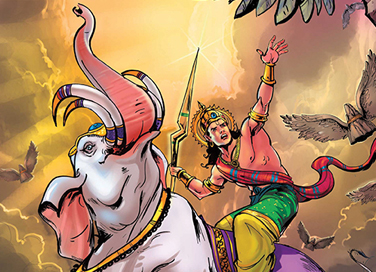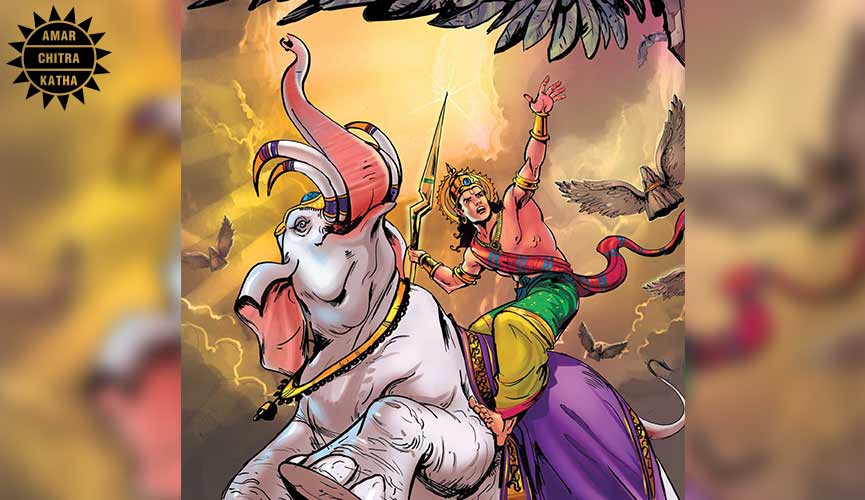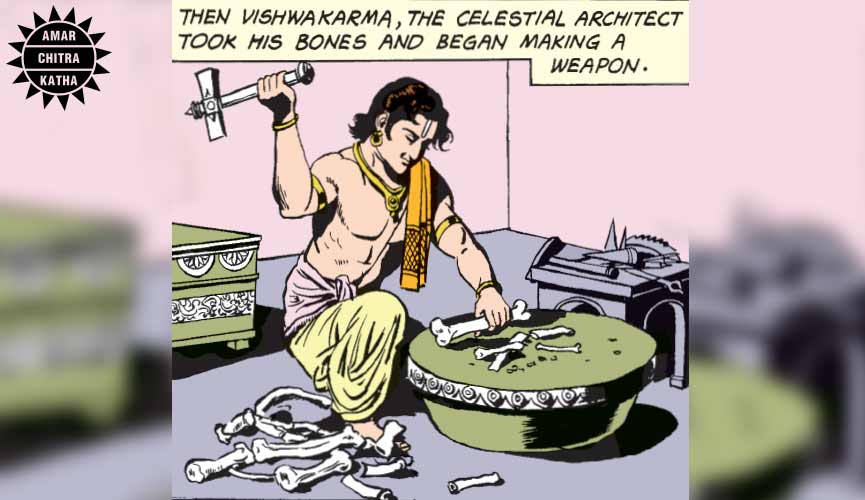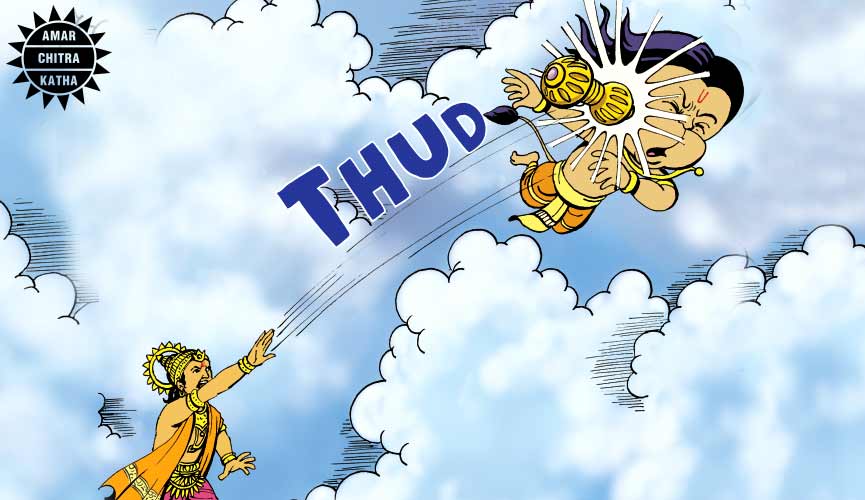Indra’s Vajra
- February 1, 2021


Indra’s Vajra
- February 1, 2021
By Shivam Pathania

The Vajra or the thunderbolt is the mighty weapon in the possession of Indra, the god of rain, storms and lightning, who is also the king of all devas. The mighty god first used his weapon on an asura called Vritra, who is an embodiment of the drought in the Rig Veda. This makes him the natural enemy of Indra, who is responsible for rains that end droughts. In the Vedas, Indra slew the serpent asura and freed the rivers that the asura had kept captive in his fortress.

But according to Bhagavata Purana, Vritra was the son of Twashta, the carpenter of gods. In a fit of rage, Indra had killed Vishwarupa, the sage, who was Twashta’s elder son. To avenge his son’s death, Twashta performed a yagna to ask for a son who would slay Indra. But he mispronounced a syllable in the mantra, and ended up getting a son who would get killed by Indra, instead of killing Indra. This son, Vritra, also had a boon, that he could not be killed by any weapon made of stone, metal, or wood. The defeated devas asked Lord Vishnu for his help, who advised them to make a weapon out of sage Dadhichi’s bones. The devas approached the sage, whose bones were stronger than any weapon because of the Narayana Kawach he possessed. The sage sacrificed his life and Vishwakarma, the divine architect, created the Vajra out of the sage’s spine. Indra, with his newly acquired weapon, faced the asura again and defeated him successfully. Since then, Indra has become synonymous with his signature weapon, which is feared to be one of the strongest weapons to exist.
To receive more such stories in your Inbox & WhatsApp, Please share your Email and Mobile number.

Indra once used the weapon against Hanuman. A very young Hanuman once thought the rising sun was a fruit. So, the naïve child flew towards the celestial body to consume it. Indra, on hearing about the incident, attacked Hanuman with his powerful thunderbolt. The blow of the weapon made him unconscious and he fell on to the ground. This left a permanent scar on the young monkey god’s jaw, and his name Hanuman, which means disfigured jaw, came to be due to this reason. The god of wind, Vayu, who was the father of Hanuman was furious and stopped the flow of air, and because of this, all life forms started dying. Indra apologised to the wind God and blessed Hanuman with the power to be never harmed by his weapon and gave him the boon to become even stronger than the Vajra.
Read more stories of the thunder god in our title ‘Tales of Indra’ now available on the ACK Comics app, Kindle, Amazon, Flipkart, and other major e-tailers.
To receive more such stories in your Inbox & WhatsApp, Please share your Email and Mobile number.

Comic of The Month
The Naval Journey of India Book I
This book is the first of a three-book series that takes a deep and detailed look at India's Naval History and a deep insight into the lives of our men and women in white. But any series on the Indian Navy has to start at the very beginning - exploring India's celebrated maritime history. Join our little hero, Bharat, and his grandfather, Commodore Sagar, as they sail into the deep blue waters of time. Book I of The Naval Journey of India takes a sweeping look at India's maritime endeavours, how the seas impacted us over millennia and how the oceans made us who we are.